Pandas 如何在使用apply函数时传递多个参数
参考:pandas apply function with multiple arguments
Pandas 是一个强大的 Python 数据分析库,它提供了许多功能来处理和分析数据。在这篇文章中,我们将详细探讨 Pandas 中的 apply 函数,特别是如何使用它来传递多个参数。apply 函数是 Pandas 中用于对 DataFrame 或 Series 中的数据应用函数的一种方式。当需要对数据执行复杂的数据转换时,apply 函数非常有用。本文将通过多个示例详细说明如何在使用 apply 函数时传递多个参数。
1. 基本使用
首先,我们从 Pandas 的基本使用开始,创建一个 DataFrame 并应用一个简单的函数。
import pandas as pd
# 创建一个简单的DataFrame
df = pd.DataFrame({
'A': range(1, 6),
'B': range(10, 15)
})
# 定义一个简单的函数
def add_custom_values(x, add_value):
return x + add_value
# 使用 apply 函数
df['A'] = df['A'].apply(add_custom_values, args=(5,))
print(df)
Output:
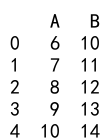
2. 使用 lambda 函数
在使用 apply 时,可以使用 lambda 函数来传递额外的参数。
import pandas as pd
# 创建DataFrame
df = pd.DataFrame({
'A': range(1, 6),
'B': ['pandasdataframe.com' for _ in range(5)]
})
# 使用 lambda 函数传递额外参数
df['A'] = df['A'].apply(lambda x: add_custom_values(x, 3))
print(df)
3. 对 DataFrame 的多列使用 apply
可以对 DataFrame 的多列使用 apply 函数,并传递多个参数。
import pandas as pd
# 创建DataFrame
df = pd.DataFrame({
'A': range(1, 6),
'B': range(10, 15)
})
# 定义一个处理多列的函数
def sum_columns(x, y, factor):
return (x + y) * factor
# 使用 apply 函数
df['C'] = df.apply(lambda row: sum_columns(row['A'], row['B'], 2), axis=1)
print(df)
Output:
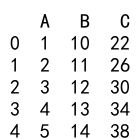
4. 使用额外的关键字参数
apply 函数也支持通过关键字参数传递额外的参数。
import pandas as pd
# 创建DataFrame
df = pd.DataFrame({
'A': range(1, 6),
'B': range(10, 15)
})
# 使用 apply 函数和关键字参数
df['C'] = df.apply(lambda row: sum_columns(row['A'], row['B'], factor=3), axis=1)
print(df)
5. 结合使用 args 和 kwargs
在某些情况下,可能需要同时使用位置参数和关键字参数。
import pandas as pd
# 创建DataFrame
df = pd.DataFrame({
'A': range(1, 6),
'B': range(10, 15)
})
# 定义一个复杂的函数
def complex_function(x, add, factor=1):
return (x + add) * factor
# 使用 apply 函数
df['A'] = df['A'].apply(complex_function, args=(10,), kwargs={'factor': 2})
print(df)
6. 处理更复杂的数据结构
在处理更复杀的数据结构时,apply 函数的灵活性显得尤为重要。
import pandas as pd
# 创建一个包含列表的DataFrame
df = pd.DataFrame({
'A': [[1, 2], [3, 4], [5, 6]],
'B': ['pandasdataframe.com' for _ in range(3)]
})
# 定义一个处理列表的函数
def process_list(data, factor):
return [x * factor for x in data]
# 使用 apply 函数
df['A'] = df['A'].apply(process_list, args=(3,))
print(df)
Output:

7. 使用 apply 处理文本数据
apply 函数也可以用来处理文本数据,例如,我们可以用它来修改 DataFrame 中的字符串。
import pandas as pd
# 创建DataFrame
df = pd.DataFrame({
'A': ['pandasdataframe.com', 'data', 'frame']
})
# 定义一个修改字符串的函数
def modify_string(s, prefix):
return prefix + s
# 使用 apply 函数
df['A'] = df['A'].apply(modify_string, args=('www.',))
print(df)
Output:
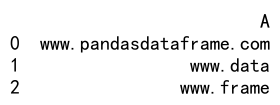
8. 结合使用 apply 和其他 Pandas 函数
apply 函数可以与 Pandas 的其他函数结合使用,以实现更复杂的数据处理。
import pandas as pd
# 创建DataFrame
df = pd.DataFrame({
'A': range(1, 6),
'B': range(10, 15)
})
# 使用 apply 和 max 函数
max_value = df['A'].apply(lambda x: x + 10).max()
print(max_value)
Output:

9. 在 apply 中使用条件逻辑
在 apply 函数中使用条件逻辑可以根据数据的不同执行不同的操作。
import pandas as pd
# 创建DataFrame
df = pd.DataFrame({
'A': range(1, 6),
'B': range(10, 15)
})
# 定义一个包含条件逻辑的函数
def conditional_add(x, add, threshold):
if x > threshold:
return x + add
else:
return x
# 使用 apply 函数
df['A'] = df['A'].apply(conditional_add, args=(5, 3))
print(df)
Output:
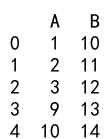
10. 使用 apply 处理时间数据
apply 函数也可以用来处理时间数据,例如,我们可以用它来转换或格式化时间字符串。
import pandas as pd
import datetime
# 创建DataFrame
df = pd.DataFrame({
'A': pd.date_range(start='1/1/2020', periods=5, freq='D')
})
# 定义一个格式化时间的函数
def format_date(date, fmt):
return date.strftime(fmt)
# 使用 apply 函数
df['A'] = df['A'].apply(format_date, args=('%Y-%m-%d',))
print(df)
Output:
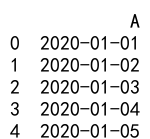
以上是 apply 函数在 Pandas 中使用多个参数的一些基本示例。通过这些示例,我们可以看到 apply 函数在数据处理中的灵活性和强大功能。无论是简单的数值计算还是复杂的数据结构处理,apply 函数都能提供有效的解决方案。
 极客教程
极客教程